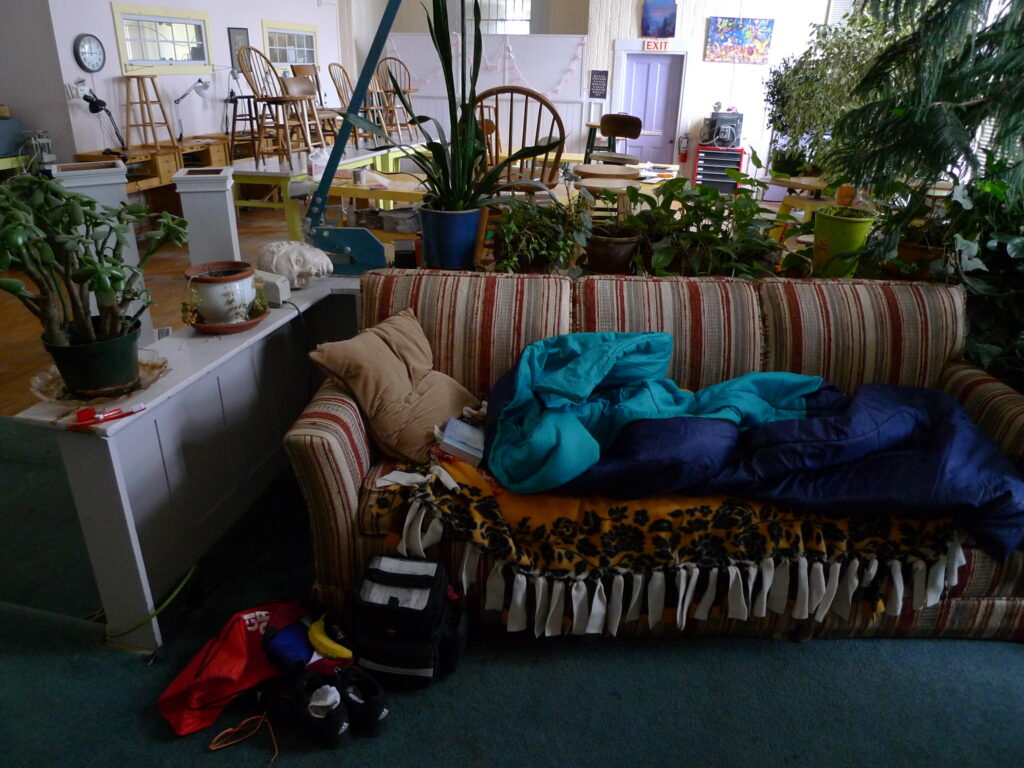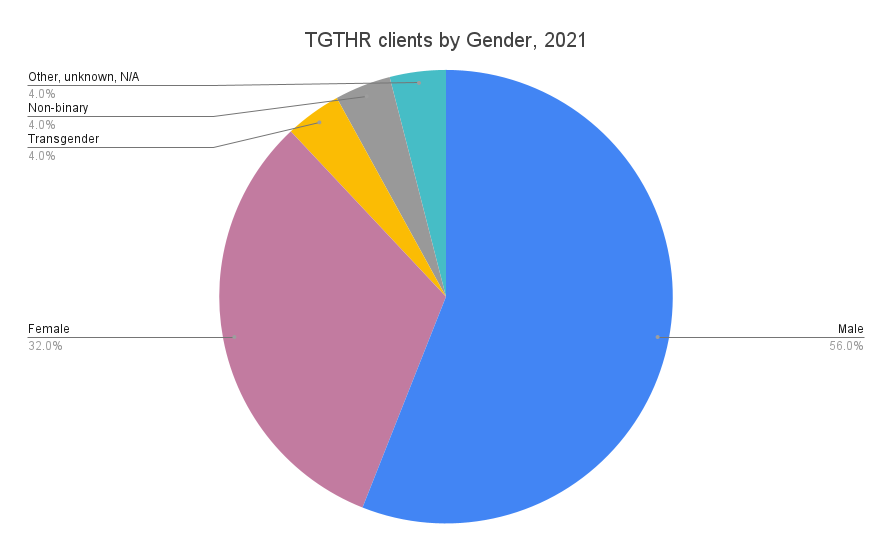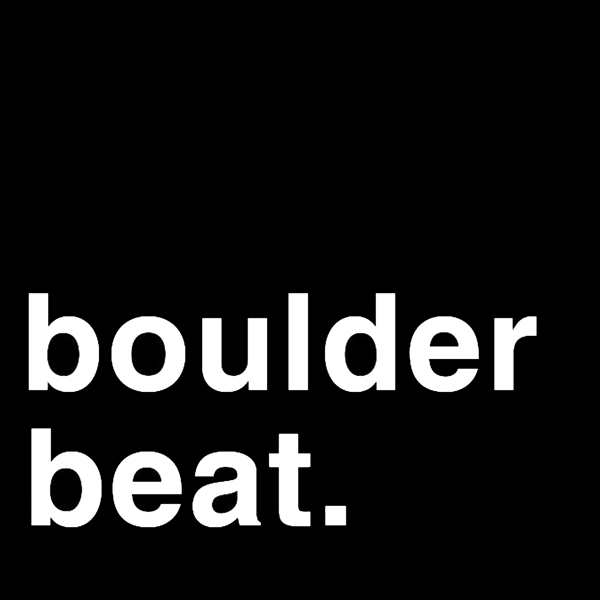Homelessness 101: Youth homelessness with Boulder’s TGTHR

Thursday, Aug. 18, 2022
Welcome to Homelessness 101, an explainer series breaking down homelessness in Boulder County and beyond. Here, we’ll explore the demographics, causes and solutions to homelessness. Much of what we’ll discuss relates to individual adults, so we’re starting by exploring two oft-ignored topics: Family and youth homelessness.
What is youth homelessness?
Exact definitions vary, but generally youth homelessness means anyone under age 25. Young adults under age 18 can be experiencing family homelessness or youth homelessness; generally the distinction has less to do with age than whether or not they are experiencing homelessness with a parent, guardian or adult caretaker, or on their own.
Youth who are homeless and without a parent, guardian or adult are sometimes referred to as unaccompanied youth, or unaccompanied minors. That can be because they left home or because their caregivers entered homeless services or criminal justice systems.
“If you’re a parent with a teenager, the adult in this household might end up at the adult shelter, or they might end up in jail, or (Bridge House’s) Ready To Work” program, said Chris Nelson, CEO of Boulder-based TGTHR, which addresses youth homelessness.
“We’ve had a number of occasions where we work with people whose parents were at the domestic violence shelter, or the homeless shelter. I cannot tell you the number of times we’ve had parents drop their minor children at (our) shelter.”
Younger kids can be incorporated into the child welfare system, but teens generally are not.
“When a child is 15-16, it’s less likely they’ll be brought into the child welfare system,” Nelson said. “It’s not specific to (a certain age) but what we’ve seen is that system doesn’t intervene. That system relies on our system a little bit more. The child welfare system will say that’s not true, but that’s absolutely true in our experience.”
There’s also overlap with adult homelessness, as youth aged 18-25 are eligible for adult services.
Younger adults tend to be newer to homelessness and therefore have different needs. They can be easy targets for exploitation.
“Young people need to be around other young people,” Nelson said. “For a lot of them, (shelters are) a scary place. Maybe they don’t have the age and experience that allows them to understand how to navigate those systems.
Services should be “developmentally appropriate.” That means “a lot more intensive case management, it’s understanding that they don’t have any job experience at all, any rental experience. They simply don’t know how to navigate any adult systems.
“Young people are incredibly resourceful and smart,” Nelson said. “The resilience of young people is that they don’t have as much chronic trauma as someone you might see who’s been on the street for years and years and years. The resolution to that trauma can be more quick; that’s not always true, but there’s a little quicker rebound.
“What works for someone who’s been on the street for 5 years is just wildly different.”
Who experiences youth homelessness?
While the lines between family, youth and adult homelessness can be unclear, “we know there are way too many kids experiencing homelessness.”
How many exactly is difficult to say. TGTHR serves 300-350 people annually in each of its programs; in 2013, the highest-demand year, 750 young people sought emergency services.
“When we did our needs assessment for 1440 Pine” — TGTHR’S affordable apartment complex for 18-24 year-olds who have prior experience with the child welfare or foster care systems — “over 400 young people in Boulder County were eligible for the housing,” Nelson said.
Nationally, 1 in 10 youth aged 18-24 will experience homelessness. For youth ages 12-17, 1 in 30 will. More than 4.2 million youth between the ages of 12-24 will find themselves without a house in any given year — 700,000 of whom are unaccompanied.
In 2021, TGTHR’s clients were:
Race/ethnicity
- 57% Caucasian
- 28% Hispanic/Latinx
- 14% African American
- 7% American Indian or Alaska Native
- 6% Unknown/Refused/Other
- 4% Multiple Ethnic/Racial Identities
- 2% Native Hawaiian/Pacific Islander
- 2% Asian
Sexual orientation
- 29% identified as LGBTQ+

“We get that info from young people who are brave enough to walk into a shelter and ask for help from adults they don’t know,” Nelson said. “If 30% of young people are showing up and saying, ‘Part of the reason I’m here is because I got outed on social media and my dad saw it and he told me to get straight or get out,’ we have to understand the real number is likely much higher.”
This data mirrors national trends. Black and Hispanic/Latinx youth are more likely to experience homelessness than their white peers, and LGBTQ+ youth are twice as likely as cisgender and heterosexual youth to be unhoused.
Despite Boulder’s LGBTQ-friendly reputation, there are absolutely local youth whose homelessness is tied to their sexual orientation, Nelson said.
“We see high-school age people that come from well-off families who get kicked out” for their sexual orientation, Nelson said. “Sometimes we see people who are getting kicked out of their homes because they’re dating someone of a different race and ethnicity.”
Why do youth become homeless?
As can be seen from TGTHR’s data, identity, experience and circumstance play a significant role in youth homelessness.
Of TGTHR’s clients in 2021,
- 79% have experienced abuse, neglect, and/or family breakup
- 31% were previously in the foster care system
- 25% reported a developmental disability
A 2019 report from the Congressional Research Service “identified family conflict and family dynamics, a youth’s sexual orientation, sexual activity, school problems, pregnancy and substance use as primary risk factors for youth homelessness.”
A qualitative look at multiple studies found that the greater number of childhood stressors, the more likely a youth is to become homeless.
The National Network for Youth identifies four major factors driving youth homelessness:
- Family conflict. According to the National Network for Youth, 90% of youth in shelters “state that they experience difficulties at home, such as constant fighting or screaming.” Child abuse and/or neglect, domestic violence, parental substance use, poverty and other family trauma are all highly correlated with homelessness.
- Child welfare systems. Youth from foster care and the juvenile justice system are disproportionately represented among the unhoused. In Colorado, more than a third of youth who age out of foster care experience homelessness by the time they are 21. “We’ve got a number of units in 1440 Pine that are direct referrals from the child welfare system,” Nelson said. “The flow doesn’t stop.”
- Residential instability. The high cost of housing and insufficient wages are primary drivers of homelessness. Per the National Network for Youth, “Due to a lack of sustainable and affordable housing, joblessness, and residential instability experienced by poverty-stricken families, many youth are forced to find shelter outside of the traditional family dwelling. In some instances, a lack of financial resources may lead to older youth leaving the household to reduce the family’s strain.”
- Disconnection from education, the workforce and social support networks. Youth who do not complete high school are 3.5 times more likely to experience homelessness than peers who completed a high school diploma, according to the National Network for Youth.
Age itself can be a risk factor in a highly competitive housing market, Nelson explained.
“Imagine being 18 years old (with) your first job, you’re making $13 an hour,” he said. “You can’t afford housing here, and if you don’t have a network of friends… Even when there are rentals that are ‘affordable,’ there’s some 25-year-old college grad who’s got rental history and employment history” — making them a much more attractive choice for landlords.
“People’s perceptions of what a young person experiencing homelessness are way off,” Nelson said. “They’re just working members of our community: They are making your coffee, washing dishes at a restaurant.
“I don’t know how many managers of restaurants and other businesses I’ve talked to say, ‘Yeah, that person stays on my couch.’”
As with all homelessness, “it’s not just people on the streets,” Nelson said. “It’s sleeping in cars, couch surfing.
“We’ve seen a ton of young people who are in high school (and) they’ve stayed at their friends’ houses and just worn out their welcome, or it’s viewed as temporary.” With college students, “they will go take notes for people in class at CU in exchange for a place to stay. It’s not as transactional as it sounds, but it happens all the time.”
Learn more about who experiences homelessness in Boulder County
What services does TGTHR provide?
TGTHR is “the only emergency provider doing youth shelter from Wyoming to Denver,” according to Nelson.
The nonprofit runs:
- A drop-in center with supportive services: case management, counseling, life skills development, education, employment, substance abuse, mental health, groups, etc. Youth can “meet with case managers, doctors, etc.; get clothing, use WiFi, laundry, get help getting their GED, secure identification, get transcripts so they can get back in school, work on family reunification — that list goes on and on and on,” Nelson said. It’s also “just a place to be. We serve hundreds in that drop-in center every year.”
- Street outreach: “We’re literally on the streets, we drive around connecting with all the people that are on the streets,” Nelson says. “We’ll run into a young person 3,4,5 times on the street and start building trust and rapport and a relationship.” Outreach also means relationship-building with adults experiencing homelessness. “People who have been on the streets for a decade (will) say, ‘Hey, we saw a young person over there’ or ‘We told them about you,’” Nelson said. “The unhoused population in Boulder is one of the best resources for getting information on and to youth. The adult population in this community is really looking after the young folks.”
- An emergency center that helps youth quickly transition back into housing. Through family reunification, housing programs, etc. “85-90% of those young people resolve homelessness with very little support,” Nelson said.
- Emergency nighttime shelter for youth aged 12-21. This is the same location as the emergency day center; it transitions to shelter every day at 5 p.m.
- Transitional housing, provided through partnerships with private landlords, Thistle and Boulder Housing Partners or other government agencies. Youth receive assistance finding and paying for an apartment, as well as supportive services.
- Residential treatment for youth referred by the child welfare system. These “group homes” (also referred to as congregate care) serve as reentry after leaving the child welfare system.
- A 40-unit apartment community for youth aged 18-25 from the welfare system at 1440 Pine. Residents sign one-year leases and also receive the aforementioned supportive services. The average length of stay is 16 months; 73 residents have lived at 1440 pine over two years.
What would it take to end youth homelessness, or at least make meaningful progress?
“I lovingly challenge the idea that you can’t solve homelessness,” Nelson said. “One of the benefits of solving youth homelessness (is that) over time, it begins to decrease the number of adults experiencing homelessness. More than half of folks who are long-term homeless or chronically homeless began those experiences when they were younger.
“If we can have a system that prevents those young people from becoming homeless,” we can make an impact.
But right now, there are still too many young people becoming homelessness.
“There is an entry flow that we don’t know how to control. So is it getting better? No, it’s getting worse.”
Turning that tide would involve:
- Better systems to capture the true scope of need — understanding and identifying all young people who are experiencing homelessness;
- An adequate amount of housing to house them all;
- Resources to make that possible
“Our resource is humans,” Nelson said. “Housing units and resources to pay people a living wage. Those are things that we can do. Maybe not tomorrow in Boulder, but we were able to serve 72 people (at the Pine Street location) with a team of people who are deeply invested.
“All we have to do is scale and replicate that.”
How can people help?
“Money, money, money,” Nelson said. “Write a check.” Volunteers and in-kind donations are also “incredibly helpful.” Find a list of needs on TGTHR’s website.
“Hire young people” — and rent to them. “Let us know where we can attach a subsidy and support,” Nelson said.
Lastly: Learn.
“Get involved in understanding this issue in our community or in your community,” Nelson said. “Come to us, ask questions, reach out. We have a team of folks that are awesome at going and presenting on every facet of what we do.”
If you are a youth experiencing homelessness, or you know or suspect someone who is, please call 303.447.1207 or visit TGTHR.org
Learn more:
https://www.ncsl.org/research/human-services/homeless-and-runaway-youth.aspx
https://nationalhomeless.org/issues/youth/
https://youth.gov/youth-topics/runaway-and-homeless-youth/federal-definitions
— Shay Castle, @shayshinecastle
Help make the Beat better. Was there a perspective we missed, or facts we didn’t consider? Email your thoughts to boulderbeatnews@gmail.com
Want more stories like this, delivered straight to your inbox?
Homelessness Boulder child abuse city of Boulder couch surfing criminal justice system foster care homelessness poverty students teens TGTHR trauma unhoused welfare youth
Sign up for a weekly newsletter from Boulder Beat.
Homelessness Boulder child abuse city of Boulder couch surfing criminal justice system foster care homelessness poverty students teens TGTHR trauma unhoused welfare youth

